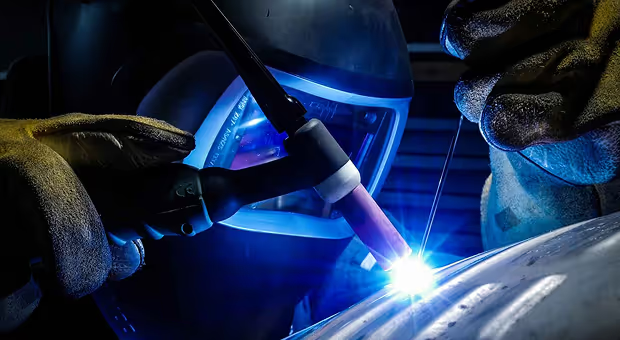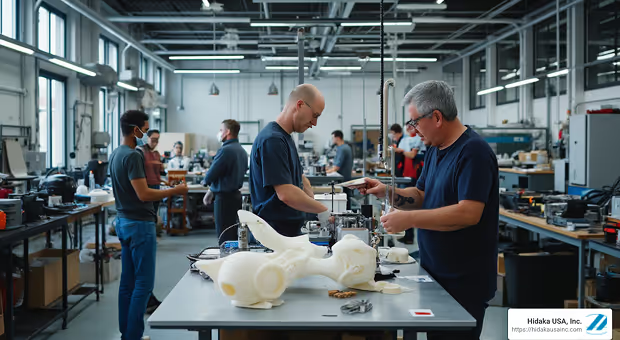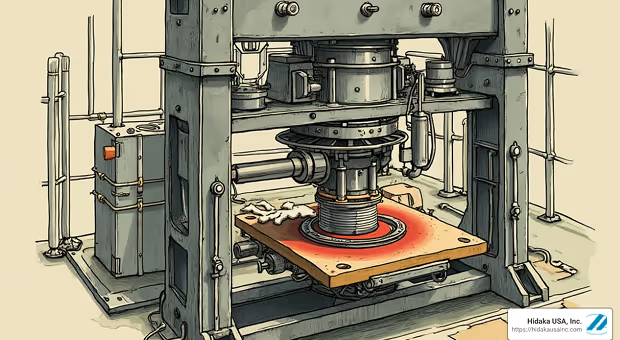A recent forecast on the welding industry found that the industry will grow at a CAGR of 6.39% between 2022 and 2029. The growth mostly stems from the rising adoption of new techniques by key players in the market.
As manufacturing processes are improving to increase efficiency, welding tasks are also catching up. Welders are also shifting to coated, high-strength, and thin-gauge materials to keep up with the changes. It's also a strategy to get more return on investment and accommodate diverse customers.
Welding technologies and prototyping services are evolving to make tasks simpler and ease the burden of training. If you are a stakeholder in this industry, you may want to know the kinds of welding trends out there. Read on to learn more about them.
A Great Shift from Steel to New Materials
Steel was the main go-to welding material in the past. While it responded well to welding activities, newer materials hit the market to compete with it. As these advances become widespread, welders need adequate training on how to handle them.
In particular, automobile part manufacturing uses lighter welding materials. They are doing so to boost the overall impact on the environment and fuel economy. The go-to material in auto assemblies is high-tensile steel due to its tensile strength and durability.
Other common materials used in this sector include titanium and aluminum. Since it is a strong metal, aluminum goes well with aircraft construction projects. On the other hand, builders often use aluminum when they need a lightweight metal during construction.
Expect to see new types of alloys developed for this sector. With the alloys, welders can focus on metals with different properties to generate different kinds of products.
Improvements in Laser Welding Technology
As one of the newest and unique types of welding, laser welding uses high-powered laser light. The light can melt metals and join them together instantly.
Laser welding uses high-speed equipment, small weld seams, and low thermal distortion. It is a non-contact process that can take place in three ways. Types of laser welds include keyhole, conduction-penetration, and conduction.
Unlike other techniques, it doesn't need filler metals, and it increases accuracy. It can help produce jewelry, electronics, and medical equipment.
Most applications of laser welding usually involve automation. They are common in automotive part manufacturing.
But for a much more effective process, use it with other welding methods. Also, expect further breakthroughs with the ongoing research in this method.
Enhanced Emphasis on Automated and Robotic Welding
Robots help increase the performance of the welds in automated welding. They also increase the quality, precision and speed of the entire process. As a result, there's no room for inconsistent welds or errors, unlike manual welding.
Since robots are programmable and come with sensors, they can stick to instructions and apply any changes needed. They are increasingly becoming cost-effective due to lower computing costs and artificial intelligence.
You can automate any welding process, provided you have a roadmap for the end result. But you still need to remain close to the robots to monitor them as they do the work. It also ensures that the robot maintains a higher level of quality.
Some of the welding processes that work well with automation include spot welding and resistance welding. The same applies to laser, TIG, and MIG welding, among others.
Virtual Reality for Welder Training, Research and Development
While virtual reality is common with video games, it also pairs well with industrial processes like welding. It can also help in the construction of skyscrapers and shipbuilding.
With virtual reality (VR), you get to use a headset to immerse yourself in a digital world. You can have a designer model a virtual type quickly for a project. The VR device lets you examine the prototype car or object in a more physical manner.
Your company can also turn to VR to train employees on workplace safety issues. Welding technology can also help instruct novice welders on the fundamentals of welding.
Nothing compares to the hands-on welding experience. But if you are looking for a new way to view your project prototypes, VR is the right choice.
Advanced Protection Technology for Workers
The welding industry is yet to leave workers behind as it rapidly changes. It's because of the increase in health hazards that welders and workers face. In particular, breathing harmful levels of fumes or gasses can put one at risk of respiratory conditions.
Many PPE manufacturers are creating more advanced PPEs for welders. PPEs can filter out ultra-fine dust particles, extreme light and fumes.
PPEs in the welding industry can help protect workers from safety issues and carcinogens. They are a great investment for a company that values the well-being of its workforce.
The Emergence of Friction Stir Welding
If you are looking for a welding technique with slight similarities to laser welding, consider friction stir welding. The process relies on a rotating tool that presses into the metals. It then traverses along a weld path.
As the name suggests, friction stir welding uses frictional heat to produce welds. The heat comes from the machine's rotating shoulder.
No need for filler materials when using this technique. You can use it to join components made from aluminum, among other alloys.
Advanced Arc Welding
Arc welding makes it possible to fuse metals together. Here, you use an electric current to produce an electric arc between an electrode and the materials.
You can add a filler metal between the joints of two materials and melt them. Expect to see a metallurgical bond after the weld cools down and solidifies. The weld will have the same tensile strength as the components.
Advanced arc welding goes well with non-ferrous metals like automotive sheet metal. It also helps in manufacturing and assembling US auto parts and bicycles. Either way, the welds are resistant to cracking and corrosion.
Need Prototyping Services?
The welding industry is ever-changing to usher in new methods and new materials. For a company that values innovation, looking out for these advances is important. Implement those you can, depending on the available resources.
And if you are looking for a one-stop shop for prototype manufacturing and mass production, count on Hidaka. Our extensive prototyping services can help address your manufacturing and production needs. Fill out the form on our contact us page to get yourself started.






